Plywood has been used to build just about everything and has been known to do just about anything. With all its uses and functionalities, it only makes sense for you to wonder if there is waterproof plywood.
No plywood is manufactured waterproof. At best, you can describe it as water-resistant. The material in plywood that can be classified as waterproof is the adhesive used to combine the layers of plywood.
I know you had your heart set out on buying some waterproof plywood. But, do not be distraught; you can make plywood waterproof, all on your own. Are you up for learning how?
Effects of Water on Plywood
Plywood may not be waterproof, but it is water-resistant, which means that water in small quantities will not affect it. However, if plywood is exposed to moisture for a long time, it stands a chance of falling apart.
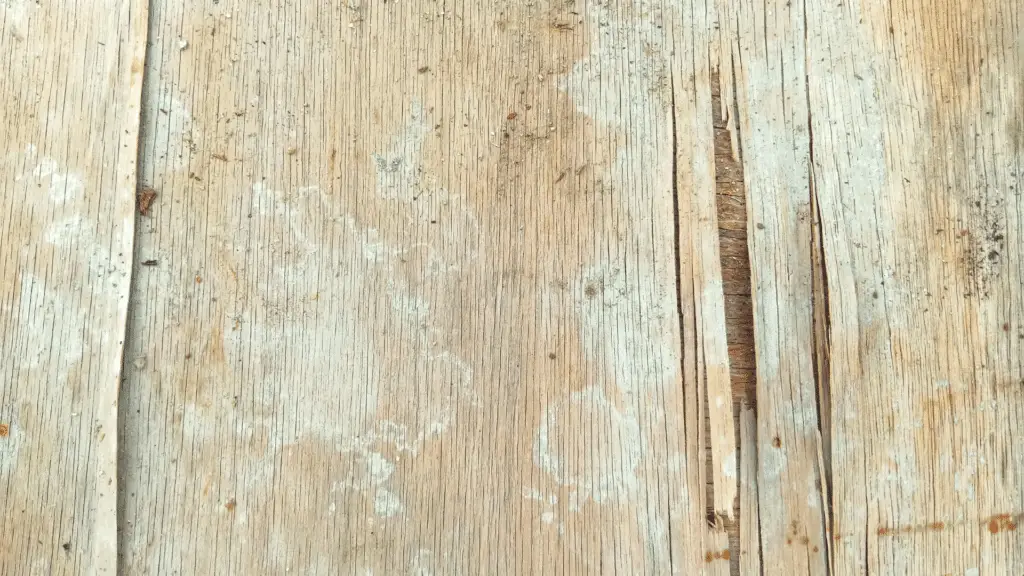
During plywood making, the wood used to create the layers is soaked in water to cause expansion. When the layers are glued together and heated, the water evaporates, leaving only the glue and wood layers to create a tight bond.
If plywood is exposed to water again over a period, the layers will start to expand again. This expansion will cause the glue holding the layers together to peel off, leading to the separation of the wood layers.
Other results of prolonged moisture exposure in plywood include the rotting and warping of the wood layers. The rotting and warping of plywood make it susceptible to breakage from pressure and unpleasant to look at.
What Is Water-Resistant Plywood?
You should know all about water and how it splashes all over the place when being used. Some materials like the tiles in your bathroom are waterproof and do not risk water damage.
However, there are structures like the kitchen cabinets or furniture placed outside made from plywood which isn’t as lucky as its waterproof counterparts. This is where water-resistant plywood comes in.
Water-resistant plywood is made using a bonding material to create an impervious finish to water for a long time. Usually, the finish is done using synthetic plastic resin.
There are three grades of water-resistant plywood, they are:
- MR Grade Plywood
- BWR Grade Plywood
- BWP Grade Plywood
MR Grade Plywood
MR stands for “Moisture Resistant,” it is the most commonly used plywood there is. MR grade plywood is resistant to limited amounts of exposure to moisture and humid conditions. Therefore, it cannot withstand high levels of water inflow such as rainfall or even snow. The adhesive used to keep the plies together is urea-formaldehyde.
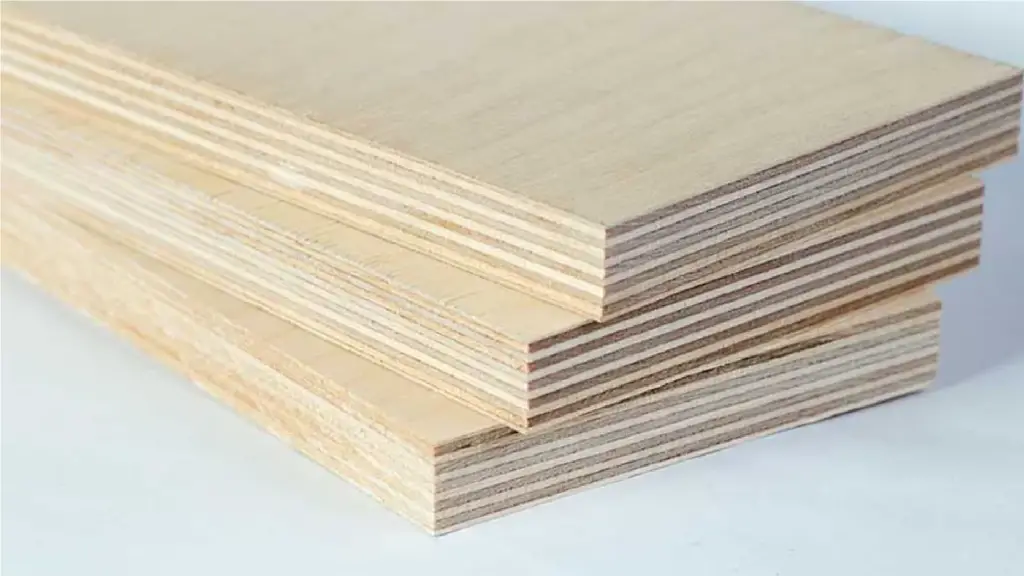
MR grade plywood is chemically treated to be highly resistant to termites and borers. This grade of plywood is mainly utilized in hot or humid areas due to its moisture-resistant capabilities.
You can use MR-grade plywood for interior structures like sofas, beds, wardrobes, or office furniture. These are places that are not exposed to water regularly, so your furniture is bound to stay moisture-free and last a long time.
You should not use this type of plywood in places like the bathroom or kitchen where it is likely to come in contact with high amounts of water.
BWR Grade Plywood
BWR stands for “Boiling Water Resistant.” BWR grade plywood is perfect for both uses indoors and outdoors. Just like MR grade plywood, BWR grade plywood is water-resistant. However, it is more resistant than the former, leading it to last much longer.
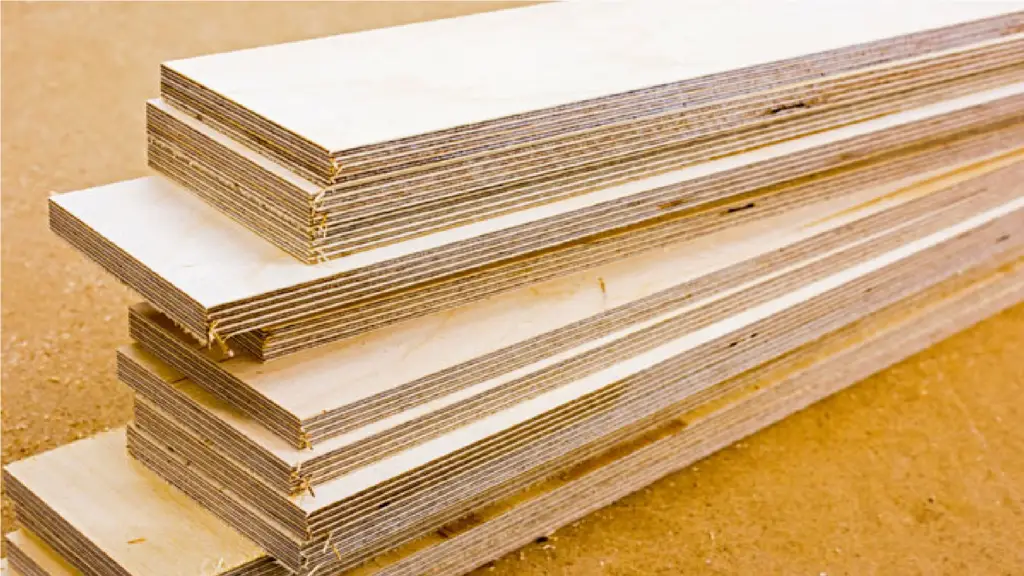
This grade of plywood is treated using diluted phenol-formaldehyde resin, which gives it its water-resistant features. It can withstand a high amount of humidity and heavy rainfall.
A bonus of BWR grade plywood is that no matter the amount of exposure to water it endures, it still looks as good as new.
Due to its high water resistance, you can use this plywood in the kitchen or bathroom to make cabinets. You can also use it outdoors to create furniture. The humidity or rainfall outside will have little to no effect on it for a long period.
BWP Grade Plywood
BWP stands for “Boiling Water Proof.” BWP grade plywood is also called marine plywood. This is as “waterproof” as plywood comes. The type of plywood is usually made from Douglas-fir or Western Larch.
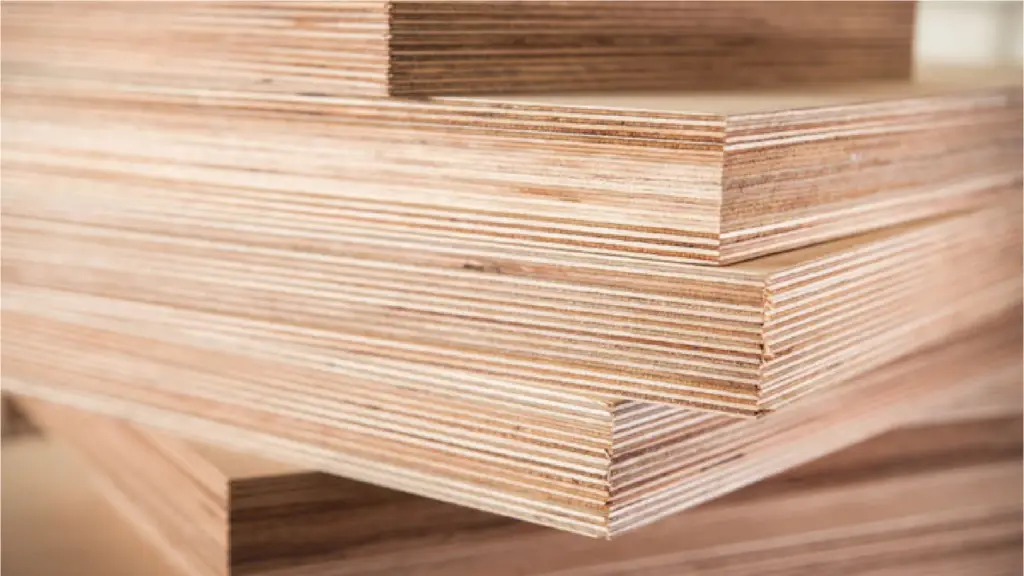
A combination of high-quality veneers and undiluted waterproof phenol-formaldehyde resin is what gives this plywood its water-resisting capabilities.
The reason for using a waterproof adhesive is because if the plywood is exposed to moisture, high levels of humidity, or extreme temperatures, the glue will remain potent. With such a strong adhesive, the layers of veneer are less likely to fall apart.
Even if the protective finish of the plywood is breached and the wood gets wet, the glue will still keep the integrity of the material.
BWP grade plywood is not chemically treated to resist rot or mold despite its water-resisting and termite repelling abilities.
As its name suggests, BWP grade plywood is used chiefly for structures requiring marine operations like boats and ships. It is also the preferential choice because it is flexible enough to make the base of the marine structure without breaking.
Substances You Can Use to Make Plywood Waterproof
Now you should understand that no plywood is fully waterproof, and what is most times waterproof is the adhesive used. To make your plywood waterproof, these are some liquids you can use to accomplish that.
Epoxy Sealer
Using an epoxy sealer is probably the most known method to making plywood waterproof. You can find epoxy in spray or paint forms.
Aside from its ability to make your plywood waterproof, the sealer also makes your plywood more robust and resistant to scratches and dents.
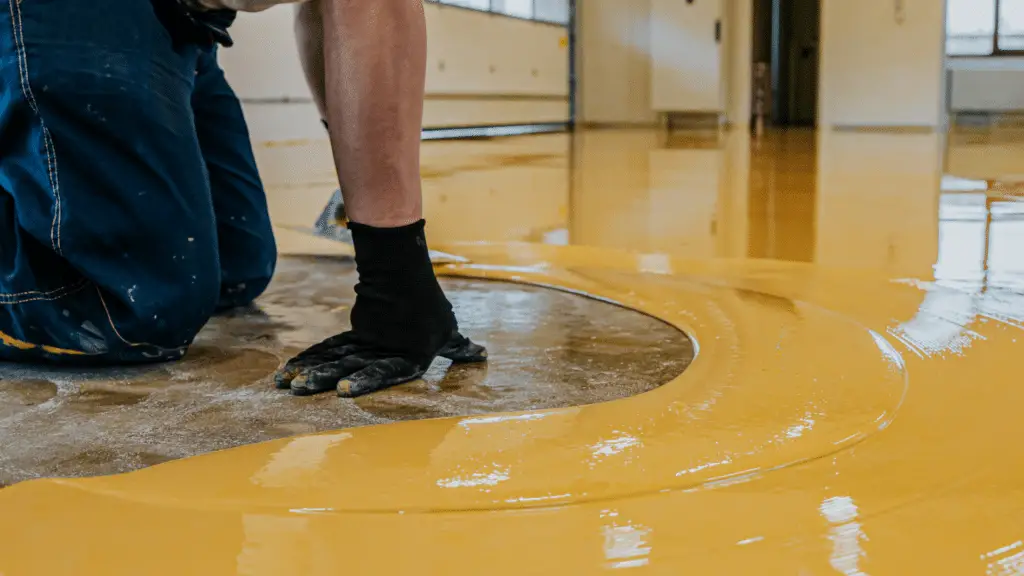
To seal your material, the epoxy seeps into the surface of the plywood, creating a solid outer layer that water cannot penetrate. The sealer is transparent, so you still get the natural color of your plywood.
However, if you’re looking to spruce up your plywood, you use sandpaper on the dried-out epoxy. After doing that, you can paint the wood with any color of your choice, giving you an aesthetically pleasing, waterproof end product.
Varnish
If you’re familiar with painting, you should know that this is also a method used to preserve the integrity of artworks. By using varnish, you get to protect your plywood against water penetration, and the layer the substance adds is barely noticeable.
Varnish is a mixture that contains a resin dissolved in a liquid that provides a stiff, glossy, and transparent finish to a surface. The waterproofing material is not as thick or as evident as paint, but it does its job all the same.
Varnish does not deal with water and other substances, so it’s best you only use it on surfaces that will not be submerged in water for long.
With that being said, you can go ahead and use it on parts of a boat or marine contraption that are above water. You can also use varnish on outdoor materials, and this is where it will work best.
Drying Oil
Drying oils are a fantastic option when trying to make your plywood waterproof. These oils don’t make plywood waterproof in the traditional sense that substances like epoxy do.
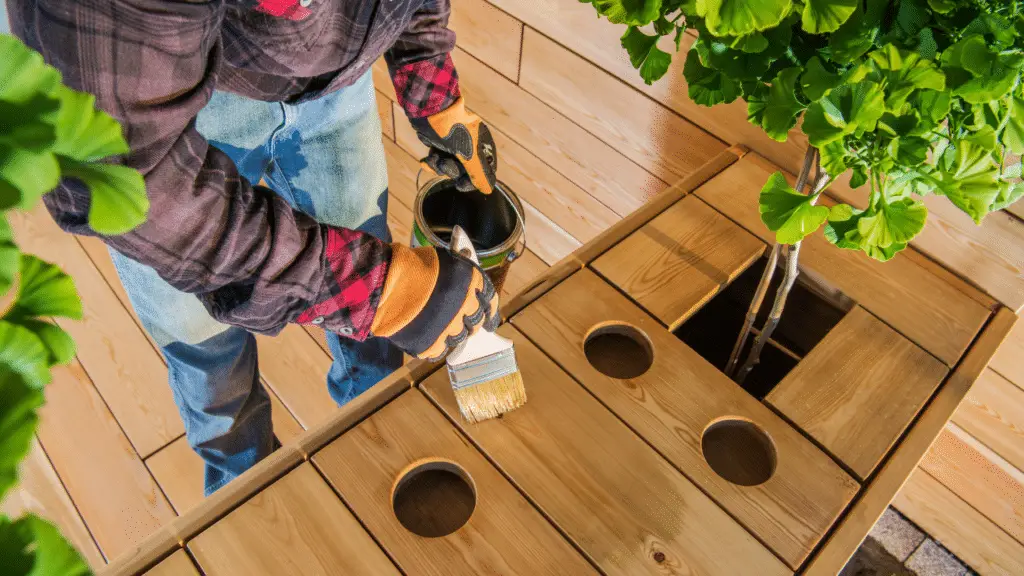
Instead of creating an outer shell like the epoxy sealer, the plywood absorbs the drying oil, giving it a thin coat. Rather than simply blocking water from penetrating the wood, the drying oil works by strengthening the wood against water damage.
Drying oils are best used for outdoor and marine use because the oil doesn’t form a hard shell preventing the plywood from having any form of natural moisture or flexibility.
Liquid Latex
You can use liquid latex as a spray or use a brush to apply it. Spraying liquid latex could be the easiest way to make plywood waterproof. All you have to do is spray, and you’re done.
Whichever way you choose to apply liquid latex, you have to be meticulous when applying it. Using liquid latex is very tricky; if you do not apply it everywhere or in a low quantity, your plywood would still be susceptible to damage by water. The worst part is, it’s pretty hard to tell if you have applied liquid latex properly.
Besides the sheer amount of attention you need, applying liquid latex is quite expensive, especially if you choose to spray it. However, the convenience you get from spraying might be worth the price to you.
When appropriately used, liquid latex is one of the best waterproofing substances out there and can keep your plywood water-free for decades to come.
Water-Based Paint
Using water-based paint will not give you that long-lasting waterproofing effect that epoxy sealers and drying oils do, but you will still be impressed with the result.

Unlike similar waterproofing substances, structures made waterproof by water-based paint need to be retouched every few years. This is a departure from other methods that involve one use that lasts for decades.
After every few years, you’ll start to notice that the paint coat is peeling, cracking, or both. When you see these issues, they are easy to fix; all you have to do is repaint.
I know it’s stressful to worry about repainting, much less doing it. But think about it, if you get to paint every few years, you get to change the aesthetic of your construction altogether, fun, right?
Benefits of Making Plywood Waterproof
Having waterproof plywood should be a goal everyone aims to achieve, especially when you want whatever you build to last. These are just some of the reasons why your plywood should be made waterproof.
Reduction of Splitting
One thing most untreated plywood cannot prevent is splitting caused by water exposure. Once this starts to happen, the plywood becomes ineffective and needs to be replaced.
Chances are you might not even notice the splitting, which could lead to water spreading and affecting other structures surrounding the plywood.
Prevention of Wet and Dry Rot
No one wants to see or smell rotten plywood, do they? Untreated plywood exposed to moisture for a long time will not only split but also develop wet rot.
Aside from the apparent ghastly appearance and pungent smell it gives off, it also weakens the plywood leading to its fatality. With waterproof plywood, you don’t have to worry about all this.
Dry rot produces the same effects as wet rot; however, it does not require as much moisture to begin the deterioration process. Waterproofing can prevent this occurrence as well.
Longer Lifespan
If left untreated, your plywood can last about two years outside, and that’s being generous. If the area your plywood is placed tends to have aggressive weather like heavy rainfall or snowfall, the plywood will last significantly shorter than two years.
Even when you think it’s safe inside, what if there is a water leak you don’t know about? It could destroy your plywood without you even knowing.
Making your plywood waterproof can give it a life span of up to 40 decades. Just imagine it, you can have plywood the same age as you or even older than you are.
Protection Against Moisture and Heat
Moisture isn’t the only weakness plywood has. It is also susceptible to warping from heat. You might be surprised to find out that on a hot sunny day after rainfall, your plywood starts to bend or curve from the middle. If you choose to waterproof, you get a few decades’ worth of guarantee and not just a few months.
Tips for Waterproofing Plywood
- Consider the purpose of the plywood and the type of wood used to create it. With this, you can ascertain the number of layers you need to apply to make your material as solid as possible.
- Depending on the purpose of your plywood, you might need to apply new layers more frequently than others.
- Working with these materials can be hazardous. Ensure to wear safety goggles, gloves, and a face mask.
- Endeavor to work in a well-ventilated area due to the fumes from these potent materials.
- Try as much as possible to follow the manufacturer’s directions on how best to use their products.
